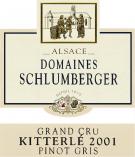History
KITTERLE was distinguished right from 1699. In 1782, twelve “schatz” of vines turned out to belong entirely to the Jesuits from Ensisheim. It has been sold under its own name since 1830.
Location
“Le Brise-Mollets” – “Calf-breaker”: it was given this local nickname by the vinegrowers who worked in the breathtakingly high vineyards on steep slopes, often as steep as 1 in 2 or 1 in 3. This volcanic-sandstone plot is on a unique site, on a steeply sloping rocky outcrop facing three ways (south-west, south and south-east). The light, sandy soil, which is kept back by huge drystone walls, only gives very low yields.
Wine-making
Hand-picked, put into crates. Whole bunches pressed. Static settling of the must. Fermented in temperature controlled tuns. Raised on the less for 8 months.
Gastronomy
- Aperitif
- Poultry
- Spicy salads (mexican, marocan, indian…)
- Foie gras
- Exotic dishes (coconut milk, safran…)
- Salty-sweet dishes
- Cheeses such as blue, munster…
- Pastry, tart, cream or mousse (avoid chocolate)
Serve at 12°C
Learn more about food & wine pairing
Tasting
A beautiful light yellow, our Gewurztraminer Grand Cru Kitterlé 2001 is an archetypical example of a terroir wine. Its nose is still discreet and very fine, and there is a glimpse of hints of exotic fruit (lychees), flowers (roses) and spices.

















